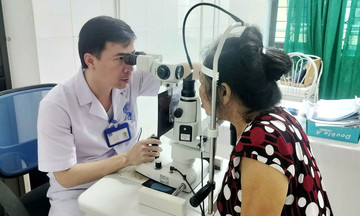On 8/7, Hanoi police announced the discovery of pork that tested positive for African swine fever. This meat had been illegally slaughtered and distributed to markets and restaurants in the area. Authorities consider this a serious incident, demonstrating a disregard for the law and public health.
African swine fever (ASF) is a contagious disease affecting only pigs, both domestic and wild. The virus (ASFV) spreads rapidly, resulting in a near 100% mortality rate in infected pigs.
Associate Professor Nguyen Duy Thinh from the Institute of Biotechnology and Food Technology at Hanoi University of Science and Technology, explained that the ASF virus persists in the environment and easily transmits through respiration and digestion between pigs. People who come into contact with infected pig farms, transport vehicles, or pork products can spread the virus.
Farmers often have difficulty detecting the disease early, leading to widespread outbreaks. Pigs with ASF are also susceptible to other diseases, such as porcine reproductive and respiratory syndrome (PRRS), influenza, and swine fever. Even when cooked, toxins can remain in the meat. Consumption can cause diarrhea, vomiting, septic shock, and even death.
Furthermore, meat from sick or dead pigs can be contaminated with bacteria and parasites (like tapeworms, Salmonella, and E. coli), causing food poisoning or other dangerous digestive illnesses.
Similarly, Doctor Le Van Thieu from the National Hospital of Tropical Diseases noted that many pig viruses, while not directly transmissible through digestion, can spread indirectly through contact with contaminated hands or utensils.
Toxins such as histamine, endotoxin, and mycotoxin can withstand temperatures of 100°C. Ingesting these toxins can lead to acute poisoning with symptoms like severe vomiting, abdominal pain, diarrhea, high fever, and a drop in blood pressure. Severe cases can result in shock and death.
Long-term exposure to small amounts of these toxins can damage the liver, kidneys, and immune system, and increase the risk of cancer. Meat containing these toxins often doesn't change in color or smell, making it difficult to detect.
 |
Illustrative photo: Minh Anh |
How to identify fresh and safe pork
According to Professor Thinh, determining if pork is truly safe requires examining the entire supply chain. Overlooking any step increases the risk of contamination.
Buyers should check the meat's elasticity: press a finger into the meat and release it. Fresh pork springs back quickly and has a reddish-pink color. Soft meat and thick skin indicate an older sow, while yellow fat suggests a sick pig. Meat injected with water or lean-enhancing substances will have a less elastic surface, and a cut piece will be soft and watery.
Fresh pork is firm and doesn't release much liquid when cut. The color should be bright pink or light red, with light-colored fat and tender fibers. Spoiled meat has a dull color, feels slimy to the touch, and the marrow separates from the bone. The color may be brown or gray, possibly with red spots on the skin.
Fresh meat has a characteristic, non-fishy, non-foul odor. The skin is 1.5-2 cm thick, and the lean fibers are tightly bound. Spoiled meat is often treated with borax or saltpeter, creating a false impression of freshness. However, the inside will be soft, watery, and have an off-putting smell, with poor elasticity.
When purchasing pork, consumers should carefully examine the color, smell, and elasticity to ensure they are selecting safe food.
Thuy Quynh












